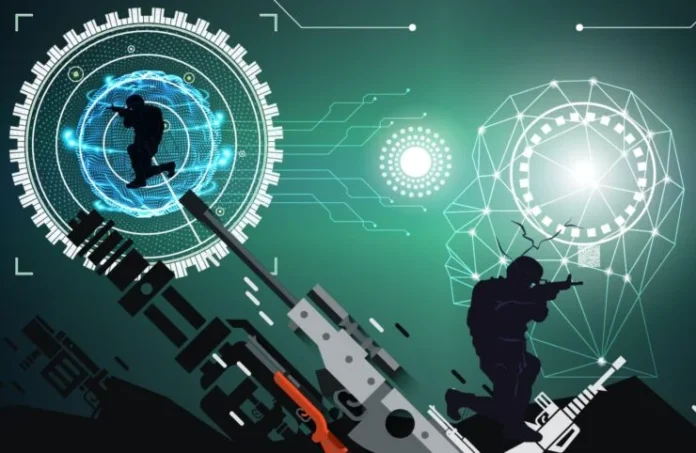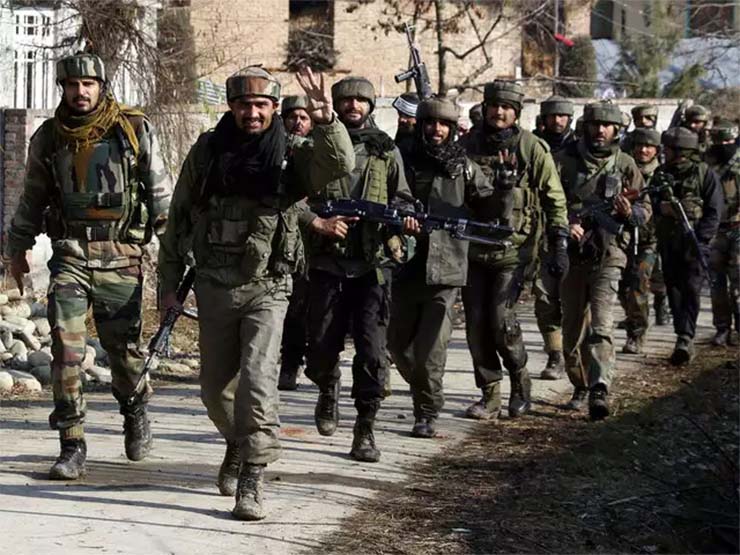Armed forces have traditionally been entrusted with the defence and security of a nation in all eventualities. Threat manifestations vary with geographical and technological advancements. Gradual adaptation was a normal practice, but the rapid globalisation and accelerated advancement of technologies have rendered time-consuming, structured reforms less effective. The advent of asymmetric warfare, disruptive technologies, and non-state actors has further complicated the process of modernisation following a predefined trajectory.
Technological advancements are altering the geostrategic environment around the globe in numerous ways. Following are some examples of how technology affects geopolitics:
- Changing Power Dynamics: Technology is altering the equilibrium of power between nations. Countries that are more advanced in technologies such as artificial intelligence, cybersecurity, and 5G networks, for instance, have an advantage over those that are not. This may cause changes in the global balance of power.
- New Types of Conflict: Technology is altering how conflicts are waged. For instance, cyber warfare has grown to be a serious threat to national security as nations use technology to target one another’s infrastructure and computer systems.
- Increased Surveillance: Technology is making it simpler for governments to monitor their citizens both domestically and internationally. A current example is the Pegasus spyware, developed by Israeli cyber-intelligence firm NSO Group and allegedly being used by many nations to snoop. This has consequences for personal privacy, human rights, and civil liberties. The rival powers can use social media and applications to gather strategic information and intelligence, which are often used as tools of information warfare and perception management.
- Globalisation: Technology is making globalisation stronger by facilitating contact with people across countries and doing business. This can lead to more competition, but it can also give people more chances to work together. The global transition of manpower, technology, and information poses a unique challenge to security forces and monitoring agencies.
- Climate Change: The function of technology in mitigating and adapting to climate change is crucial. As countries strive to reduce their carbon emissions and acclimatise to the changing climate, this factor is gaining significance in the geostrategic environment.
- 5G Networks: The deployment of 5G networks is changing the global telecommunications landscape. It is a critical technology that has the potential to transform industries and economies. However, the race to develop and control 5G networks has become a geopolitical battleground between countries.
In the annals of modern warfare, three distinct periods of technological advancement emerged: during World Wars I and II, the Cold War, and the present day. Land-based systems, precision-guided ammunition, artificial intelligence, cybernetics, robotics, hypersonic, electronic warfare (EW) systems, etc., have been supplanted by technological advancements at a rapid rate. Modern technologies influence warfare by altering the character of conflicts and the way militaries operate. Here are a few ways that disruptive/advanced technologies are impacting modern warfare:
Artificial Intelligence: The military industry is being transformed by artificial intelligence (AI). AI can improve intelligence gathering, decision-making, and task automation, which can make the military more efficient and effective. Unmanned aerial vehicles (UAVs), autonomous weapons, and logistics administration are currently utilising AI. It can aid in enhancing situational awareness, decision-making, and operational effectiveness. AI can analyse enormous quantities of data in real time, which can help identify potential threats and vulnerabilities.
Cyber Warfare: With the expansion of cyberspace, cyber threats and cyber warfare have increased. Countries are making substantial investments in cyber defence and offence capabilities. These attacks seek to disrupt vital infrastructure and the financial system, steal sensitive information, and weaken each other’s military capabilities. The creation of cyber weapons powered by artificial intelligence and the implementation of quantum computation for encryption and decryption can provide a significant advantage in cyber warfare. Cyber espionage is a developing concern, and nations are investing in sophisticated cyber espionage capabilities to safeguard national security interests.
- Digital Surveillance: The proliferation of digital surveillance technologies, including drones, satellites, and cameras, has provided the military with unprecedented situational awareness. This can be used for surveillance, reconnaissance, and gathering intelligence.
- Directed Energy Weapons: Directed energy weapons, such as laser and microwave weapons, are gaining prevalence on the battlefield. They can disable or neutralise hostile equipment, drones, and missiles. These weapons are both cost-efficient and versatile.
- Quantum Computing: Quantum computing has the potential to revolutionise military operations due to its unparalleled computing capacity. It is applicable to complex simulations, data analysis, and cryptography. This will aid in enhancing operational capabilities and decision-making.
- Robotics and Autonomous Systems: Robotics and autonomous systems can be utilised for logistics, surveillance, search and rescue, and even combat. These systems can reduce the risk to human life and improve operational effectiveness.
- Space Race: As private space exploration increases, there is a new space race between nations to establish their dominance in space. Space’s militarisation is a major concern, and countries are investing significantly in the development of anti-satellite weapons and other space-based capabilities.
- Unmanned Systems: On the battlefield, unmanned systems such as drones and autonomous vehicles are becoming increasingly common. They are employed for surveillance, reconnaissance, and even attack. These systems can operate for longer periods of time than human soldiers, are more cost-efficient, and can reduce the risk to human life.
In general, sophisticated, and disruptive technologies are reshaping modern warfare by altering military operations. These technologies can provide substantial efficiencies, accuracy, and cost-effectiveness. Nonetheless, they present a new techno-strategic environment that the Armed Forces must address by modernising their recruitment and training processes to meet the threats and challenges.
A must for India
Innovative military technology is a costly endeavour that takes years of painstaking research and development. Some requirements for gaining an advantage in technology over competitors include state-backed programmes, civil-military fusion, funding, and quick system integration. But developing nations like India also must cope with urgent geopolitical and economic problems that are just as significant as the geostrategic imperatives.
Invariably, the government is always in the act of striking a balance between resources and requirements, as is evident from the defence budget allocations towards modernisation and technological advancements in the past. In the present scenario, it is prudent to develop only those technologies that are essential to winning the war and innovate methods to negate the technological advantages that our adversaries have. Squandering precious resources to adopt an expensive technological environment is not advisable, as disruptive technologies are rapidly changing goalposts.
Negation of the technological advantage of the adversary can be undertaken by refining our own battle procedures and tactics, reorganising, revamping military training, innovating, developing counter-technologies, and technologically hardening our existing inventory of Armed Forces.
India has taken several initiatives that will have a positive impact on technology procurement, development, and advancement. Some of the suggested endeavours are as follows:
- Indigenous Production: India can reduce its reliance on foreign suppliers by investing in indigenous defence production. This will not only contribute to the growth of the domestic defence industry, but it will also stimulate the economy. In recent years, India has made significant strides in indigenous production, and this trend should be maintained.
- Foreign Acquisitions: India can also acquire sophisticated defence systems and equipment from foreign suppliers. This will facilitate the acquisition of sophisticated technologies that are unavailable in the country. India has already signed a number of contracts for foreign procurement, and this process will be accelerated to modernise its armed forces.
- Joint Ventures: India can also form joint ventures with foreign defence companies to co-develop and co-produce defence systems and equipment. This will aid not only in the acquisition of cutting-edge technologies but also in the growth of the domestic defence industry.
- Technology Transfer: India is able to negotiate technology transfer agreements with foreign suppliers in order to acquire advanced technologies and develop domestic production capabilities. This will contribute to the nation’s defence industry becoming self-sufficient.
- Cyber Security: India can invest in cyber-security and cyber-hardening of its network to safeguard its vital infrastructure and military complexes. This will aid in protecting the nation from cyber hazards and cyberattacks, which have become a major concern.
- Procurement Process: Standard procedures like Long Term Integrated Perspective Plans that unfold into a Five-Year Plan and an Annual Acquisition Plan may be a structured approach to upgrading and modernising essential warfighting hardware, but for harnessing cutting-edge modern technologies, a novel and dynamic process needs to be formulated for rapid absorption and implementation.
- Modernisation of Armed Forces: Indian Armed Forces traditionally have been manpower intensive. Difficult and varied terrain, huge land borders with neighbouring countries which need physical domination, lack of political will, Civil-military wariness, limited budgetary allocation, cumbersome procurement processes, and slow R&D and manufacturing process are some of the impediments in the modernisation of Armed Forces. Conventional superiority was preferred as it was considered adequate to deal with Pakistan and China. China’s relentless pursuit of modernisation of its Armed Forced, since the last two decades, paid handsome dividends. Chinese Armed Forces have emerged as a potent force challenging the USA in the global power struggle. Indian Armed Forces are not left with any other choice than to accelerate its flagging modernisation plans. Fortunately, India has distinct advantages in Space Programme, Integrated Missile Development Programme (IMDP), Defence Industry, Defence Research and Development Organisation (DRDO), Strong Economy, Cyber and Information Technology talent reservoir, Young Population Index, etc. Seamless integration of high-end technology in the Armed Forces has commenced in a systematic and structured way. Agni Veer and Agni Path Scheme is the catalyst of change to retain a ‘technically savvy youthful Armed Forces’.
The Republic Summit
On April 25, at Republic Summit 2023, Chief of Army Staff General Manoj Pande delivered a discourse on the transformation that is taking place in the Indian Army while describing the domains where the future transformation would take place in the Armed Forces. Speaking at the Republic Summit on “Time of Transformation”, the Army chief said, “We have taken a number of transformation initiatives so that we become a more modern, technology-driven, self-reliant, and battle-worthy force. To be able not only to carry out our mandate effectively but also to meet future security challenges in a much more effective manner.”
The COAS enunciated four drivers of this change and transformation. These drivers are unprecedented changes in the geopolitical landscape, the changing character of warfare, the boundless potential of disruptive technology, and the changing socioeconomic sphere. The COAS further stressed five key domains in which the transformation would happen in the future: force restructuring and optimisation, the infusion of technology and modernisation, system processes and functions, Human Resource Management, and the aspect of jointness and integration. The year 2023 has been declared a ‘Year of Transformation’ for the Armed Forces.
-The writer is a veteran Infantry Officer with 36 years of Army Service. He is presently serving at Amity University as Director, Amity Centre for Defence and Strategic Studies (ACDSA), Associate Professor, Amity Institute of Defence and Strategic Studies (AIDSS) and Deputy Commandant, Amity Institute of Education and Training (AIET). The views expressed are personal and do not necessarily carry the views of Raksha Anirveda.






